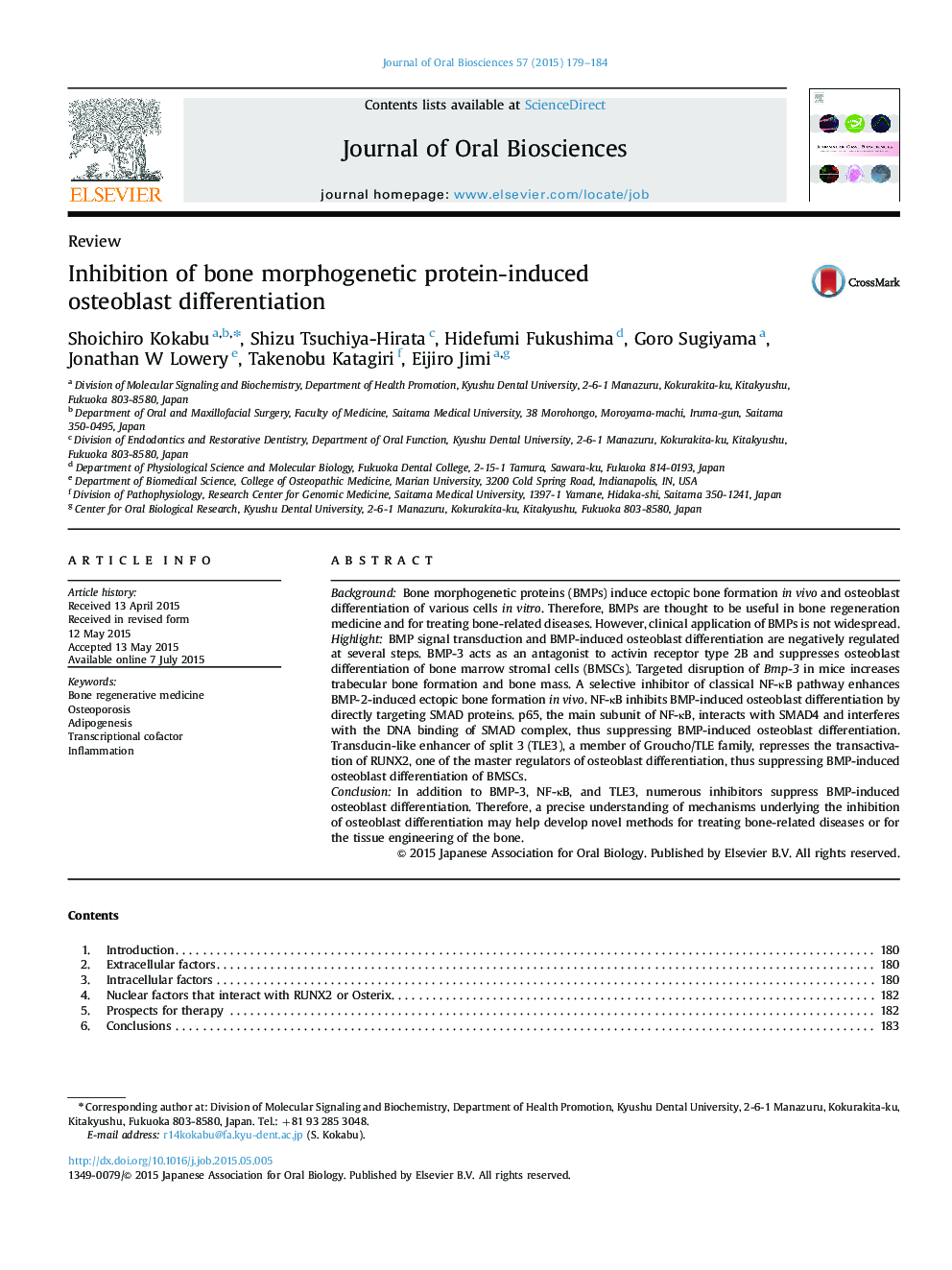| Article ID | Journal | Published Year | Pages | File Type |
|---|---|---|---|---|
| 2776764 | Journal of Oral Biosciences | 2015 | 6 Pages |
BackgroundBone morphogenetic proteins (BMPs) induce ectopic bone formation in vivo and osteoblast differentiation of various cells in vitro. Therefore, BMPs are thought to be useful in bone regeneration medicine and for treating bone-related diseases. However, clinical application of BMPs is not widespread.HighlightBMP signal transduction and BMP-induced osteoblast differentiation are negatively regulated at several steps. BMP-3 acts as an antagonist to activin receptor type 2B and suppresses osteoblast differentiation of bone marrow stromal cells (BMSCs). Targeted disruption of Bmp-3 in mice increases trabecular bone formation and bone mass. A selective inhibitor of classical NF-κB pathway enhances BMP-2-induced ectopic bone formation in vivo. NF-κB inhibits BMP-induced osteoblast differentiation by directly targeting SMAD proteins. p65, the main subunit of NF-κB, interacts with SMAD4 and interferes with the DNA binding of SMAD complex, thus suppressing BMP-induced osteoblast differentiation. Transducin-like enhancer of split 3 (TLE3), a member of Groucho/TLE family, represses the transactivation of RUNX2, one of the master regulators of osteoblast differentiation, thus suppressing BMP-induced osteoblast differentiation of BMSCs.ConclusionIn addition to BMP-3, NF-κB, and TLE3, numerous inhibitors suppress BMP-induced osteoblast differentiation. Therefore, a precise understanding of mechanisms underlying the inhibition of osteoblast differentiation may help develop novel methods for treating bone-related diseases or for the tissue engineering of the bone.
